 | |
| Use | Civil and state flag |
|---|---|
| Adopted | 5 October 1965 |
The flag of Rio de Janeiro is the official flag of the Brazilian state of Rio de Janeiro. [1]
 | |
| Use | Civil and state flag |
|---|---|
| Adopted | 5 October 1965 |
The flag of Rio de Janeiro is the official flag of the Brazilian state of Rio de Janeiro. [1]
The flag was officially instituted by State Law No. 5588 of 5 October 1965, [2] and was unchanged following the state's merger with Guanabara a decade later.

In heraldry, supporters, sometimes referred to as attendants, are figures or objects usually placed on either side of the shield and depicted holding it up.

Rio de Janeiro is one of the 27 federative units of Brazil. It has the second largest economy of Brazil, with the largest being that of the state of São Paulo. The state, which has 8.2% of the Brazilian population, is responsible for 9.2% of the Brazilian GDP.

The national flag of Brazil is a blue disc depicting a starry sky spanned by a curved band inscribed with the national motto Ordem e Progresso, within a yellow rhombus, on a green field. It was officially adopted on 19 November 1889 –four days after the Proclamation of the Republic, to replace the flag of the Empire of Brazil. The concept was the work of Raimundo Teixeira Mendes, with the collaboration of Miguel Lemos, Manuel Pereira Reis and Décio Villares.
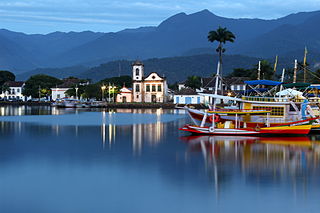
Paraty is a preserved Portuguese colonial (1500–1822) and Brazilian Imperial (1822–1889) municipality with a population of about 43,000. The name "Paraty" originates from the local Guaianá Indians' indigenous Tupi language, named for an abundant local fish native to the region. Paraty is located on the Costa Verde, a lush green corridor that runs along the coastline of the state of Rio de Janeiro, in Brazil. Paraty has become a tourist destination, known for its historic town center and the coast and mountains in the region. The historic center of the city, as well as four areas of the Atlantic Forest, were inscribed on the UNESCO World Heritage List in 2019 under the title "Paraty and Ilha Grande".

The national flag of the Portuguese Republic is a rectangular bicolour with a field divided into green on the hoist, and red on the fly. The lesser version of the national coat of arms of Portugal is centered over the colour boundary at equal distance from the upper and lower edges. Its presentation was done on 1 December 1910, after the downfall of the constitutional monarchy on 5 October 1910. However, it was only on 30 June 1911, that the official decree approving this flag as the official flag was published. This new national flag for the First Portuguese Republic, was selected by a special commission whose members included Columbano Bordalo Pinheiro, João Chagas and Abel Botelho. The conjugation of the new field color, especially the use of green, was not traditional in the Portuguese national flag's composition and represented a radical republican-inspired change that broke the bond with the former monarchical flag. Since a failed republican insurrection on 31 January 1891, red and green had been established as the colours of the Portuguese Republican Party and its associated movements, whose political prominence kept growing until it reached a culmination period following the Republican revolution of 5 October 1910. In the ensuing decades, these colours were popularly propagandised, green represented the hope of the nation and the colour red represented the blood of those who died defending it, this happened to endow them with a more patriotic and dignified, therefore less political, sentiment.

The coat of arms of Brazil was created on 19 November 1889, four days after Brazil became a republic. It consists of the central emblem surrounded by coffee and tobacco branches, which were important crops in Brazil at that time. In the round shield in the center, the Southern Cross can be seen. The ring of 27 stars around it represents Brazil's 26 states and the Federal District.
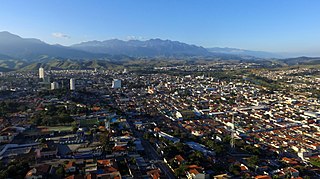
Cruzeiro is a municipality in the state of São Paulo in Brazil. It is located about 220 km (137 mi) from the state capital. It is part of the Metropolitan Region of Vale do Paraíba e Litoral Norte. The population is 82,571 in an area of 305,70 km2. People of things who come from or inhabit in Cruzeiro are called "cruzeirense".
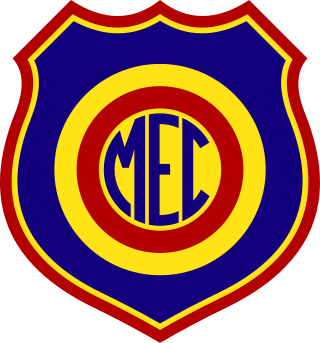
Madureira Esporte Clube, usually abbreviated to Madureira, is a Brazilian football team based in the city of Rio de Janeiro, in the neighbourhood of Madureira. The team compete in Campeonato Carioca, the top tier of the Rio de Janeiro state football league.
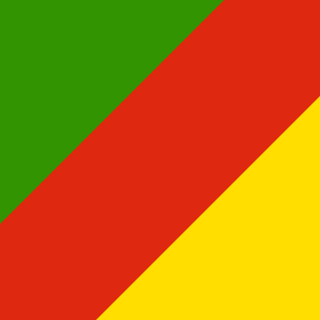
The Riograndense Republic, often called the Piratini Republic, was a de facto state that seceded from the Empire of Brazil and roughly coincided with the present state of Rio Grande do Sul. It was proclaimed on 11 September 1836 by general Antônio de Sousa Neto as a direct consequence of the victory obtained by gaúcho oligarchic forces at the Battle of Seival (1836) during the Ragamuffin War (1835–1845). It had a constitution adopted in 1843 and was recognised only by the United Kingdom, France, and Uruguay.

The Imperial Crown of Brazil, also known as the Crown of Dom Pedro II or as the Diamantine Crown, is the Crown manufactured for the second Brazilian Emperor, Pedro II.

Elsie Lessa was a Brazilian journalist and writer of American descent.

The Confederation of the Equator was a short-lived rebellion that occurred in the northeastern region of the Empire of Brazil in 1824, in the early years of the country's independence from Portugal. The secessionist movement was led by liberals who opposed the authoritarian and centralist policies of the nation's first leader, Emperor Pedro I. The fight occurred in the provinces of Pernambuco, Ceará and Paraíba.
This gallery of coats of arms of Brazilian regions shows the coats of the 26 Brazilian States and the Federal District.

The National Seal of Brazil is one of Brazil's national symbols, displayed on several official documents, such as graduation diplomas, consular and diplomatic papers, military conscription forms, etc. Most documents, however, feature the National Coat of Arms instead of the National Seal.
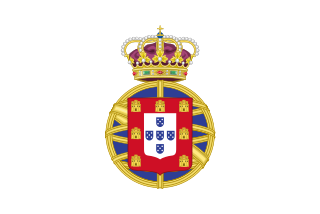
The Kingdom of Brazil was a constituent kingdom of the United Kingdom of Portugal, Brazil, and the Algarves.

The Brazilian nobility refers to the titled aristocrats and fidalgo people and families recognized by the Kingdom of Brazil and later, by the Empire of Brazil, dating back to the early 19th century, when Brazil ceased to be a colony of the Kingdom of Portugal. It held official status until 1889, when a military coup d'état overthrew the monarchy and established the First Brazilian Republic.
Most Mexican states do not have an official flag. For these states, a de facto flag is used for civil and state purposes. State flags of Mexico have a 4:7 ratio and typically consist of a white background charged with the state's coat of arms.
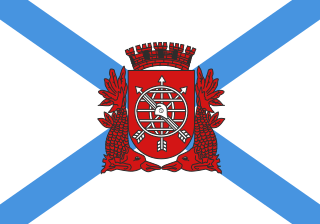
The flag of the City of Rio de Janeiro or flag of São Sebastião do Rio de Janeiro consists of a white rectangle with a blue saltire behind the coat of arms of the city of Rio de Janeiro, which is displayed red in the center. Its basic design has changed little since it was adopted on July 8, 1908, except during period from 1960 to 1975 when the municipality of Rio de Janeiro was known as Guanabara State. It resembles the flags of Galicia and the Russian Navy.
The 2017 Rio de Janeiro Soccer Tournament was the 114th edition of the top tier football of FFERJ. The top four teams competed in the 2017 Brazilian Football Cup.
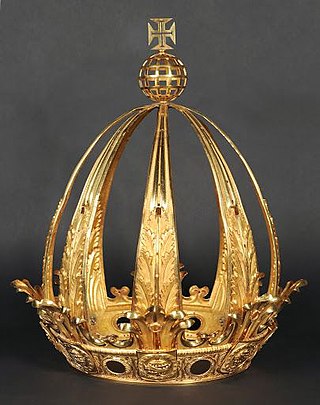
The crown of Pedro I is the first imperial crown of Brazil and was made for emperor Pedro I of Brazil. It was made in 1822 for his coronation and was the symbol and emblem of Brazilian imperial power until it was replaced in 1841 by the crown of his son and successor Pedro II. It is one of the jewels of the Brazilian Empire and is now on display at the Imperial Museum in Petrópolis.